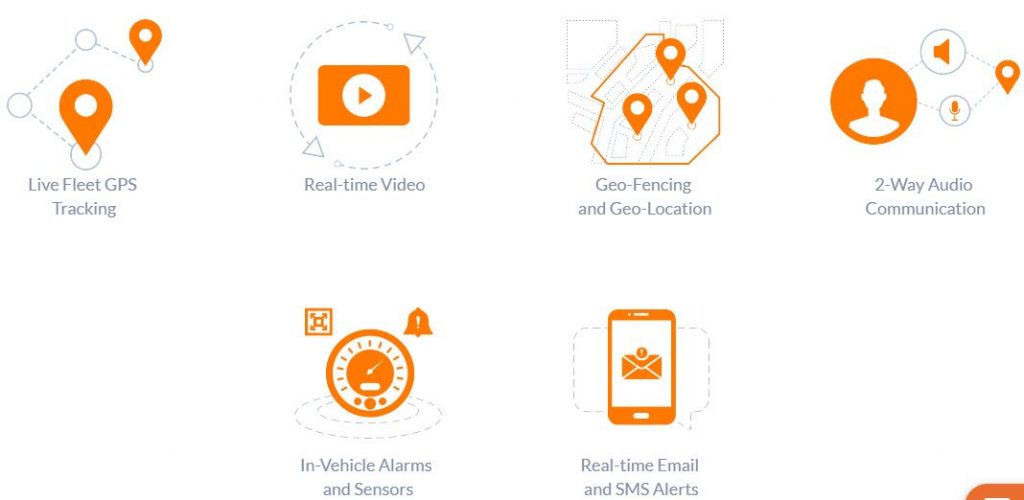Owning a powerful vehicle seems cool but with great power comes great responsibilities.
Vehicle owners and fleet managers are always afraid of their vehicle being stolen or being used without their prior consent. Due to this, they wish to monitor vehicles and even control it remotely in case it is stolen; on the wrong route; or being used for the wrong purposes. Let us now discuss the basic fundamentals lying behind remote car surveillance and controlling system.
Basic Concept Behind A Car Surveillance System
For remotely controlling a vehicle we generally use two techniques. The first one is by using an android device, hidden anywhere within the vehicle. When the car starts moving, the mobile device uses its sensors to detect movements; about which are updated via your smartphone. Upon receiving the alert, you can send a message to halt the vehicle instantly; so that the thief will not be able to turn it on again. Additionally, you can send another message to find out the location of the vehicle using GPS. The other technique involves the use of GPS trackers or advanced car surveillance systems such as one developed by Eyeride.
They enable you to monitor your vehicle and get real-time information on its whereabouts; how it is being driven, and other things. The system sends alerts to your mobile phone. You can also monitor the vehicle and the crew from a screen in a centralized data convergence point. Now many vehicles have onboard cameras as well. Onboard cameras are essential in keeping a constant eye on the vehicles’ movement along with its driver.
The Benefits of On-Board Cameras
1. Onboard cameras help in the reduction of the blind spots
Especially for the large commercial vehicles, it becomes difficult to park the vehicle in reverse only with the help of traditional rear-viewing mirrors. The car surveillance system plays an essential role in such cases; and the system warns the driver in case of any obstruction or any living creature coming on the way while parking.
2. Acts as evidence
The onboarding cameras are very useful for solving any disputes in case of accidents.
The video footage from the cameras is used as police evidence to ensure proper
serving of justice.
3. For regulation
Onboarding cameras along with other surveillance system are used to prevent drivers from rash driving. This will reduce the chances of accidents and will help to prevent deaths from such accidents.
4. For safety in school buses
Onboarding cameras are a must in school buses to keep an eye on the students. This will help the school authorities to ensure that proper discipline is maintained among the students and no students are being harassed in any way.
5. To safeguard cash
Onboarding cameras help the authorities to safeguard the cash and prevent the employees from mishandling with it.
We can also build our very own surveillance and control system for our vehicles. Let us now talk about the materials required for remote surveillance and control.
Materials Required for Creating Mini Car Surveillance System
- Arduino
- Any Android smartphone
- 1Shield – Which links the mobile and the Arduino via Bluetooth and utilizes the
mobile app, doing away with the need for Android coding. - Car fuse
- Battery
- Relay – one 40A relay or four 10A relays
Wires and soldering items.
Let us now focus on how to develop the working model and then implement the
same.
Development and implementation
When you remove the fuse in the car power section, which connects the car key and the
engine, you can turn off the engine. Let’s follow the steps for the same.
- Now, you need to add a relay at this node to regulate turning the engine on and off.
The really should of the right current rating, failing which will burn the entire circuit
due to excess current flow. You can use a 40A relay or use four 10A relays parallel to
one another to distribute the total current on all of them. - Now you need to use a car fuse and disconnect it to allow you to use two terminals
to connect to the relay. - Connect the relay board to the Arduino.
- Connect the 1Shield on top of Arduino.
- Coding the Arduino: The idea behind it is to sense when the car moves with the help of the Accelerometer sensor for the smartphone. When the vehicle moves, it alerts you through an SMS sent to your phone.
On receiving the SMS, you have two options: either send “GPS” in form of a text
message to the phone in the car gets the car’s position; or send “STOP” so that the
phone in the car halts the car by turning the relay you put in the place of the fuse.
Must Read – Pressure Washers for Cars | Bluetooth Adapter for Car Speakers
Conclusion
The Android phone in the car must be hidden to keep it safe from anyone’s reach. It is possible to add other features; like capturing an image with the camera on the phone and sending to your email to see who is driving the car. Also, the phone can send a video stream via Skype or even control the audio system in the vehicle to issue an alarm to frighten the thief.







